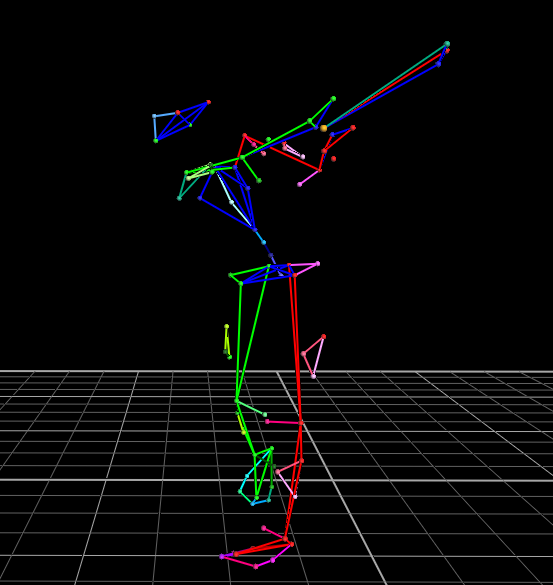


Outcomes research
Benefits Of Blood Flow Restriction Training For Baseball Pitchers
Benefits Of Blood Flow Restriction Training For Baseball Pitchers
Combining Blood Flow Restriction And Low Load Resistance Exercise Can Lead To Increases In Shoulder Lean Mass And Muscular Endurance In Baseball Pitchers.
Combining Blood Flow Restriction And Low Load Resistance Exercise Can Lead To Increases In Shoulder Lean Mass And Muscular Endurance In Baseball Pitchers.


Computerized simulation image via 3D motion capture of a baseball pitcher in action.
Blood Flow Restriction (BFR) training is a new and upcoming method that allows athletes to work out smarter, not harder. Essentially, it is a technique where an athlete wears a tourniquet/cuff on the upper arm or thigh while lifting less weight to build muscle mass. The tourniquet prevents blood flow out of the area (arm or thigh), which makes the body think that the athlete is working out harder than he/she is.
Bradley S. Lambert, PhD, Laboratory Research Manager at the Center for Human Performance, performed a randomized clinical trial in which he tested the efficacy of BFR-LIX (low-load resistance exercise) on the shoulder when added to standard offseason training in Division IA collegiate baseball pitchers.
The results of this trial are published in the 2023 Journal of Shoulder and Elbow Surgery. Lambert hypothesized that BFR combined with LIX would enhance training-induced increases in shoulder-region lean mass, rotator cuff strength and endurance. Based on these results, Lambert concluded that BFR-LIX training when combined with a collegiate off-season program can boost increases in shoulder lean mass and muscular endurance. These results imply a possibility of creating favorable outcomes and preventing injuries in baseball pitching athletes.

Bradley S. Lambert, PhD
The scapulohumeral muscles, which connect the scapula to the humerus, are particularly important in throwing/overhead athletes such as baseball pitchers. These muscles play a key role in the advanced coordination and strength needed for pitching. Therefore, a great deal of off-season and in-season training focuses on strengthening these muscles. Additionally, these muscles are prone to injury especially if subjected to high-intensity and high-load resistance training (HIX).
The purpose of the rotator cuff is to block blood flow across the occlusion site via compression. Specifically, occlusion reduces arterial blood flow from the heart to the limb and prevents venous return with a typical 40-80% arterial limb occlusion pressure. Combining BFR and LIX produces results similar to HIX with less risk of over-training and injuries. More specifically, chronic responses to BFR-LIX include increased muscle hypertrophy, reductions in postoperative atrophy of muscle and bone, and improved muscle function.
Our findings provide support for future research investigating the efficacy of blood flow restriction for preventative in-season shoulder training. The results also provide a rationale for future research on the efficacy of blood flow restriction augmented rehabilitation after operative and non-operative injuries in throwing/overhead athletes. Future investigations should seek to determine the optimal combination of exercise selection, training frequency, blood flow restriction occlusion duration and timing within a sports training program that may provide the greatest benefit for different types of throwing for overhead athletes.
Bradley S. Lambert, PhD
Human Subjects Research Director at the Department of
Orthopedics & Sports Medicine
In this randomized trial, 28 baseball pitchers were classified into two groups: one with BFR and the other without BFR. Both groups performed shoulder LIX along with off-season training. The trial recorded the parameters of regional lean mass, rotator cuff strength, fastball biomechanics and achievable workload in both pre- and post-training settings. The results indicated that when compared to rotator cuff training alone, BFR-LIX combined with rotator cuff training led to increases in upper extremity lean mass. Essentially, BFR provided a novel stimulus leading to additional muscle mass gain.
“Our findings provide support for future research investigating the efficacy of blood flow restriction for preventative in-season shoulder training. The results also provide a rationale for future research on the efficacy of blood flow restriction augmented rehabilitation after operative and non-operative injuries in throwing/overhead athletes,” said Lambert. “Future investigations should seek to determine the optimal combination of exercise selection, training frequency, blood flow restriction occlusion duration and timing within a sports training program that may provide the greatest benefit for different types of throwing for overhead athletes.”
Training is essential to enhance shoulder-region lean mass, rotator cuff strength and endurance in baseball pitchers.
More than 45 million Americans engage in strength training or resistance training. Although popular, this activity carries with it the risk of both acute and chronic injuries in athletes as well as recreational enthusiasts. HIX has several drawbacks including the enhanced risk of over-training and injuries. On the other hand, LIX carries a lesser risk. There is still more left to discover about BFR and its various applications in sports medicine.
Lambert BS, Hedt C, Ankersen JP, Goble H, Taft C, Daum J, Karasch R, Moreno MR, McCulloch PC, Rotator cuff training with upper extremity blood flow restriction produces favorable adaptations in Division IA collegiate pitchers: a randomized trial, Journal of Shoulder and Elbow Surgery (2023), doi: https://doi.org/10.1016/j.jse.2023.02.116.
This study has received grant support from Major League Baseball (MLB) and Delfi Medical Innovations.
Abanti Chattopadhyay, PhD
December 2023
Related Articles








